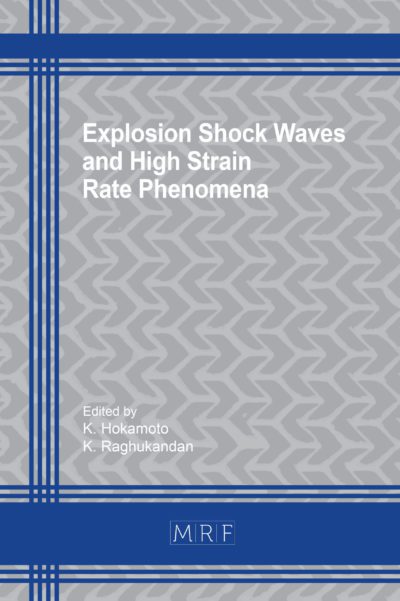Microstructure and Mechanical Properties of Dissimilar Friction Welded B500B-1.4021 Steel Joint
OSTROMĘCKA Małgorzata
download PDFAbstract. In this study, unalloyed reinforcing steel (B500B) is merged with martensitic stainless steel (1.4021). The paper presents microstructural observation, hardness measurements, and tensile test results of this dissimilar joint as-welded. In this specific case, no heat treatment is demanded. The joint is a part of the pile foundation for railway traction lines.
Keywords
Rotary Friction Welding, Dissimilar Joint, Hardness, Tensile Test, Microstructure, Martensitic Stainless Steel, Reinforcing Steel
Published online 7/20/2022, 7 pages
Copyright © 2022 by the author(s)
Published under license by Materials Research Forum LLC., Millersville PA, USA
Citation: OSTROMĘCKA Małgorzata, Microstructure and Mechanical Properties of Dissimilar Friction Welded B500B-1.4021 Steel Joint, Materials Research Proceedings, Vol. 24, pp 240-246, 2022
DOI: https://doi.org/10.21741/9781644902059-35
The article was published as article 35 of the book Terotechnology XII
![]() Content from this work may be used under the terms of the Creative Commons Attribution 3.0 licence. Any further distribution of this work must maintain attribution to the author(s) and the title of the work, journal citation and DOI.
Content from this work may be used under the terms of the Creative Commons Attribution 3.0 licence. Any further distribution of this work must maintain attribution to the author(s) and the title of the work, journal citation and DOI.
References
[1] M.R. Abbasai, Kh. Gheisari. Microstructure and Mechanical Properties of the Friction Welded Joint between X53CrMnNiN219 and X45CrSi93 Stainless Steel, Journal of Advanced Materials and Processing 5 (2017) 81-92.
[2] A. Ambroziak. Zgrzewanie tarciowe materiałów o różnych właściwościach. Oficyna Wydawnicza Politechniki Wrocławskiej, Wrocław, 2011.
[3] PN-EN ISO 15620:2019-07 Friction welding of metallic materials.
[4] PN-EN 10080:2007 Stal do zbrojenia betonu – Spajalna stal zbrojeniowa – Postanowienia ogólne.
[5] PN-EN 10088-3: 2015-01 Stale odporne na korozję – Część 3: Warunki techniczne dostawy półwyrobów, prętów, walcówki, drutu, kształtowników i wyrobów o powierzchni jasnej ze stali nierdzewnych ogólnego przeznaczenia.
[6] PN-EN ISO 6507-1: 2018-05 Metale – Pomiar twardości sposobem Vickersa – Część 1: Metoda badania.
[7] B.S Taysom, C.D. Sorensen. Controlling Martensite and Perlite Formation with Cooling Rate and Temperature Control in Rotary Friction Welding. International Journal of Machine Tools & Manufacture, 150 (2020) art. 103512. https://doi.org/10.1016/j.ijmachtools.2019.103512
[8] M. Demouche, E.H. Ouakdi, R. Louahdi. Effect of Welding Parameters on the Microstructure and Mechanical Properties of Friction-Welded Joints of 100Cr6 Steel. Iranian Journal of Materials Science and Engineering 16 (2019) 24-31. https://doi.org/10.22068/ijmse.16.2.24
[9] N. Sridharan, E. Cakmak, B. Jordan. Design, Fabrication, and Characterization of Graded Transition Joints. Welding Journal 96 (2017) 295-306.
[10] C.S. Paglia, R.G. Buchheit. Microstructure, microchemistry and environmental cracking susceptibility of friction stir welded 2219-T87. Materials Science and Engineering A 429 (2009) 107-114. https://doi.org/10.1016/j.msea.2006.05.036













